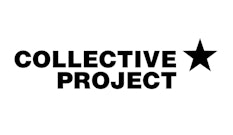
With just over a week since President Joe Biden has been sworn into office, movement in hemp regulations at the federal level has come to a pause.
And while this is typical for new federal administrations, it may mean incoming hemp regulations could take longer to solidify—or may even change—as new leaders assume their positions and review Trump-era policies.
The White House issued a memo Jan. 20, the day of Biden’s inauguration, asking agencies to withdraw any rules that have not yet been published in the Federal Register.
The day after the White House released its memo, the U.S. Food and Drug Administration (FDA) withdrew its “Cannabidiol Enforcement Policy,” a document it submitted to the White House Office of Management and Budget (OMB) in July. While the contents of the document were unknown, some in the industry predicted—and hoped—it would provide at least temporary guidance on cannabidiol (CBD) regulations.
While the FDA declined to say what the policy included or when a new document may be submitted, an agency spokesperson tells Hemp Grower the FDA will “work closely with the new administration to advance appropriate regulations and policies that are in line with the agency’s public health mission.”
Larry Farnsworth, spokesperson for the National Industrial Hemp Council (NIHC), says the FDA is still in a period of transition as it works to appoint a more permanent commissioner (following the appointment of Dr. Janet Woodcock, M.D., as acting commissioner on Jan. 20). In addition, Farnsworth says the FDA’s current priority is the COVID-19 pandemic.
“We hope they can move this as expeditiously as possible,” Farnsworth says.
Effects on the Final Rule
Meanwhile, the White House memo also asked all federal agencies to “consider postponing” rules that have not yet taken effect for 60 days.
As such, the U.S. Department of Agriculture (USDA) tells Hemp Grower it is currently reviewing its final rule on hemp that it published Jan. 15. As of now, the final rule is due to take effect March 22.
The USDA notes that the final rule “has not been withdrawn.”
“It is not unusual for a new administration to take the opportunity to review new and pending regulatory actions,” a USDA spokesperson tells Hemp Grower in an email. “That’s what USDA and many other agencies are doing now to ensure longstanding as well as new programs are structured and resourced appropriately and also to ensure programs are implemented to best serve their intended stakeholders.”
RELATED: Your Guide to the USDA’s Final Rule on Hemp
The White House memo notes agencies that postpone rules during this period have the option to open an additional 30-day comment period. The USDA has already held two comment periods on its interim final rule on hemp that it took into consideration while drafting its newest set of regulations.
Hemp Grower Managing Editor Patrick Williams contributed to this report.

























